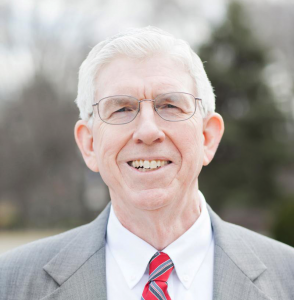I have tried to establish a narrative illustrating the factors that have altered American evangelicalism in the last two centuries and the way in which Baptists in the South experienced the change. The purpose of this series has been to give an interpretive background to the differences of doctrinal perception presently experienced between Calvinists and non-Calvinists in the Southern Baptist Convention.
We began with the conversion of Ann and Adoniram Judson to Baptist views. We viewed their commitment to truth, to the doctrines of grace, and to the glory of the triune God as expressive of evangelical commitments in general and Baptist ideals in particular in the first two decades of the nineteenth century. These views, given fullest confessional expression in the Charleston Association Confession of Faith, were shared by most writers, teachers, and preachers among Southern Baptists until the waning of the nineteenth century and the dawning of the twentieth.
American evangelicalism took a radical turn in the 1830’s away from the deeply conversionist Calvinism of the era of the First and Second Great Awakenings into a theology more confident of human will and righteousness. The nineteenth century saw an expansion of this changed doctrine with accompanying shifts in evangelistic method. While Baptists resisted both the doctrine and the shift in methodology for most of that century, in the early twentieth century a gradual capitulation to the new style emerged accompanied by a change in doctrinal method, a shortening of the doctrinal canon, and a deepening sense of inclusivity in developing theological options. Decline of the historic confessional presentation of biblical soteriology in the context of a subtle intrusion of modernism alongside the adoption of a will-centered transactional decisionism on the issue of salvation emerged as the Southern Baptist ethos. This strange doctrinal conglomerate with both coherent and repelling factors was uncomfortably accepted by both parties as a necessary compromise for the maintenance of denominational strength.
Mixed with this uneasiness another disturbing difficulty stirred the pot of confusion—attitudes toward race. The cultural orthodoxy, therefore, that molded my earliest experiences within the pale of Baptist Christianity, in the midst of a loving and Bible oriented fellowship, included faulty views of race and regeneration. In my own experience, I accepted these contortions with deeply troubling consequences. The one I had to deal with as I saw its ugly implications in the tumultuous history of my Mississippi and my hometown, Brandon, a history that paralleled my baby-boomer life. Not only my own heart, but the nation as a whole confronted it. The other, regeneration, generated turmoil inside my own soul but the journey toward resolution was private, existential, but infinitely more consequential. While Willie Mays, Leontyne Price, and the dark events of Mississippi’s 60’s pushed me out of the cultural orthodoxy of the one, John L. Dagg, James Petigru Boyce (themselves firmly situated in the social structures of race in the South), but also the Philadelphia Association, and Baptist confessions of faith brought the cleansing power of historical perspective to the other. On both these issues I knew that the inherited mainstream opinion had fostered deep problems and were wrong.
Soon a third “R” would be added to complicate the religious conscience even more—revelation. The Elliott Controversy of 1959 through 1963 gave high profile in Baptist life to the nature of the Bible as a revelation from God. The boldness of Ralph Elliott in teaching and publishing exposed the fundamental incompatibility of the modernist stream of thought with conservative, evangelism-focused Southern Baptists. For three decades, however, the denomination stuck together in the midst of an increasingly tumultuous squall.
I have posited the idea that Billy Graham emerged as the perfect phenomenon to give safe haven to both these tendencies. I have argued that his developing message and style caressed and highlighted one of the central themes of both these movements. His ingenious expression of their common core—the determinative quality of each individual’s selection of present value and eventual destiny—created a willingness to identify with him and give encouragement to his style of evangelistic engagement. Both Ken Chafin, a leading pastor-professor-denominational activist in the more modernist school of thought, and W. A. Criswell, a leading pastor-theologian among the emerging inerrantist party, found Billy Graham and his ministry compatible with their view of Christian discipleship. They could even cooperate together when Billy Graham provided the focus of their cooperation.
These tendencies in two directions in Graham’s public posture were far beyond subtle. He was the creative force behind the development of neo-evangelicalism sweeping into his fold of supportive friends the learned defenders of biblical inspiration and its consequent affirmation of biblical inerrancy. Billy Graham loved the Bible and loved aggressive evangelism. At the same time he insisted that none of the leaders of the major denominations be excluded from high profile appearance and even leadership positions in his large crusades. He loved to create the appearance that, in spite of some significant differences, virtually all degrees along the Christian doctrinal spectrum approved of setting forth the need for a decision for Christ. The focus on the human will, and God’s acknowledgment of its inviolability continued to give a sliver of common ground on a non-Calvinist expression of being born again to those whose continents were drifting apart on revelation.
His attractiveness to such a variety of persons indicates no guile nor lack of sincerity or firm conviction on his part. Throughout his rise to wide-spread popularity, his iconic stature in culture, and his lasting imprint on evangelicalism, Graham has deflected any glory from himself to God. “I am not a great man,” he noted, “but I do serve a great God, and I give Him all the glory for whatever my associates and I have been able to accomplish over the years” (Billy Graham & Me, Chicken Soup, 399).
Richard DeVos, the co-founder of Amway, described the traits that have given sustaining influence to Graham. “Billy’s voice, his style and his conviction all make him a compelling preacher. He believes in his message and wants to deliver it to you without pushing it at you. His goal is for people to meet Jesus, but he wants his listeners to be the ones who make the decision. And that’s why he is a great preacher. He makes it easy for people to listen to him” (Billy Graham & Me, 113f). That testimony is borne out in the fact that 101 persons (arranged alphabetically from Lamar Alexander to Efrem Zimbalist, Jr.) contributed exuberantly appreciative comments on Graham in the “Chicken Soup for the Soul” book entitled Billy Graham and Me.
When Timothy Michael Cardinal Dolan, Archbishop of New York, succeeded in 1993 in getting Billy Graham an audience with Pope John Paul II, he commented, “Blessed John Paul II knew what the rest of the world knows: Billy Graham is one of the most beloved preachers of the Gospel since St. Paul.” Then Dolan added, “which, by the way, is what Dr. Graham remarked about the Pope when he died in 2005.” Hmm. Tobymac, the leader of the Christian hip-hop band dc Talk, after playing several venues for Graham’s youth meetings at Crusades observed, “He personified everything right about Christianity.” Sally Quinn, founder of the Washington Post’s website “On Faith,” gave her opinion that, instead of becoming more hard-line and rigid as people normally do when they get older, Graham has grown in his acceptance of varying views, “more tolerant, more pluralistic, more open, and he has literally followed the Word of Christ.” His stances for racial justice in the South through insisting on the integration of his crusades held there were applauded by Jimmy Carter, Bill Clinton, John Lewis and Gerald Durley, his sympathy toward caring for the environment by Al Gore, and his loving skills as a father by Anne Lotz, and as a grandfather by Will Graham. Richard Land commended his humility, his transformation of fundamentalism into evangelicalism, and his evangelistic crusades one of which led to the conversion of Land’s father. Larry King, the Jewish, atheist, talk-show host had multiple meetings with Graham who kept up a continued witness to King. One thing that perplexed King, however, was the lack of resolution that Graham showed when the question came, “Billy, are you saying Jews are going to hell?” Graham would reply, “No I’m not saying that because I don’t know what happens to them at their death.” For King, this was contradictory to Graham’s personal confidence of salvation in Christ alone. Because he would not make judgments about other people, King said, “In fact, I just don’t think he knows. He believes what he believes.” King said, I don’t believe it but he believed that Graham was “very sweet, very genuine.”
In 2011 Billy Graham wrote Nearing Home. He wrote of living with dignity, responsibly, hopefully, with submission, gratitude, joy, and trust to the end. It is filled with great biblical insight about how to age with the full intent of living to God’s glory. In The Reason for My Hope, written in 2013, Graham put into print some archived doctrinal sermons updated with contemporary illustrations. They show that he is aware of what is happening in Christian and secular thought today and provides some of the clearest doctrinal and apologetic presentations of his ministry. He investigated the theme of redemption in culture and in the Bible, the doctrine of sin, the doctrine of substitutionary atonement, the evidence for the reality of Christ and his resurrection, the necessity of conforming to the gospel while avoiding making the gospel conform to us, the doctrine of hell, and the hope of the second coming of Christ. He also confronts with insight and biblical truth the secular worldview that presently leads American culture on a fast pace to dissolution and individuals to hell, completely deceived as to the certainty and horror of it. Where I Am came from the press in 2015. It is a book by book summary of the whole Bible with a gospel centered emphasis in each book. It carries the ambience of the exuberant and sincere conviction of a man whose personal persuasion of his indebtedness to the gospel and his safety in Christ is a treasure he desires to share with the world.
At the same time, the books are peppered with confidence in the power of the human will and that God’s self-designated place in the transaction is to make an offer and leave the outcome to the will of man. “You must be willing to be redeemed. You must exchange your sin-blackened heart for a new heart that is cleansed by My blood.” “This story is great because God gives each of us the choice to accept His forgiveness and live with Him eternally. . . . He stands patiently with his hand outstretched. . . . Will you take his hand and let Him free you from the chains of sin?” The Reason for My Hope closes with an invitation to pray for the reception of Christ. “Would you like to know that every sin is forgiven? Would you like to know that you are ready to meet God? It could happen today, if you will only let Christ come into your life. The Bible says that ‘Whoever calls on the name of the Lord shall be saved’ (Romans 10:13).” Graham says that the prayer must be done “honestly and sincerely” and that “no transcribed prayer grants a sinner salvation,” but we must, nevertheless, “recognize our sin and repent of it, be willing for God to change us, and obediently follow Jesus Christ.” It is a very hard formula to resist, for nothing in it is positively wrong; Graham made it seem like that is what evangelicals always had held, and always had practiced; and Southern Baptists viewed him as a paradigm of doctrinal preaching that supported their purpose of evangelism and church growth. His theology, with the exception of an indiscernible ecclesiology, was celebrated as traditional Baptist theology.
But some important parts were missing. It is just the part that is left out, the part that is left either unexplained or purposefully ignored because rejected—that body of truth connected with human bondage to sin and the necessity of efficacious grace, of God’s immutable purpose and his delight in bringing it to pass—that leaves the tentacles of decline embedded within the system and, eventually, leads to other sad perversions of gospel truth.





















